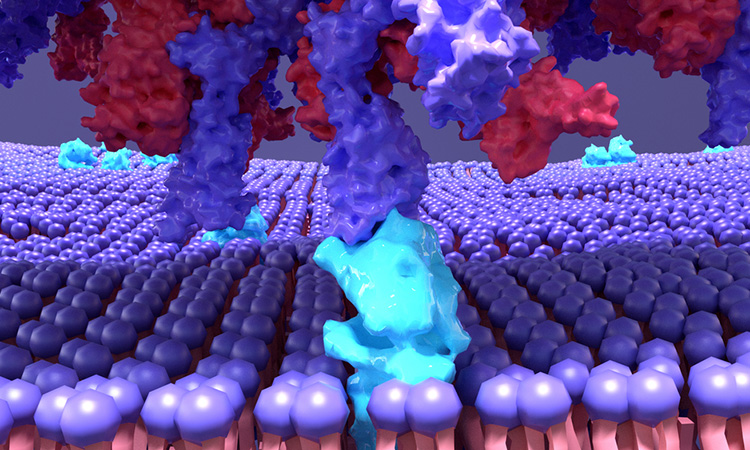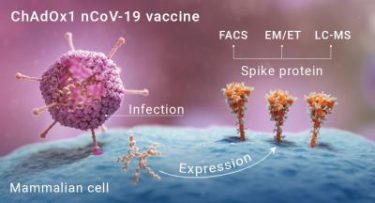Spikes from AstraZeneca COVID-19 vaccine resemble SARS-CoV-2 S proteins
Posted: 8 April 2021 | Victoria Rees (Drug Target Review) | No comments yet
Using cryo-electron microscopy, researchers have shown that the Spike (S) protein on cells exposed to the AstraZeneca vaccine is highly similar to the SARS-CoV-2 S protein.


New research has, for the first time, compared images of the Spike (S) protein that develops on the surface of cells exposed to the Oxford-AstraZeneca vaccine to the S protein of SARS-CoV-2. The images show that the S proteins are highly similar to those of the virus and support the modified adenovirus used in the vaccine as a leading platform to combat COVID-19.


Graphic depicting how the proteins form on the surface of cells presented with the vaccine [credit: University of Southampton].
The study was conducted at the University of Southampton and the University of Oxford, both UK. According to the researchers, the SARS-CoV-2 virus uses the S proteins sticking out of its surface to attach to and enter cells in the human body. These proteins are coated in sugars, known as glycans, which disguise parts of the viral proteins to the human immune system.
The vaccine developed by the University of Oxford and AstraZeneca is an adenovirus-vectored vaccine, which takes a safe version of a virus and adds in the information from part of a pathogen, in this case the SAR-CoV-2 S protein, to generate neutralising antibodies against that target.
In the new study, the scientists characterised the SARS-CoV-2 proteins manufactured by the cells presented with the Oxford-AstraZeneca vaccine. They exposed a range of cells in vitro to the Oxford-AstraZeneca vaccine. Using cryo-electron microscopy (cryoEM), they took thousands of images which they then combined to build up a clear picture of the resulting S protein on the cells.
Professor Peijun Zhang, of the University of Oxford, who led the imaging work said: “CryoEM is an immensely powerful technique which enabled us to visualise the dense array of spikes that had been manufactured and presented on the surface of the cells.”
Further chemical analysis of the glycans that coat the newly developed S protein revealed that they bear a high resemblance to those surrounding the SARS-CoV-2 S protein. According to the team, this is an essential feature of the vaccine as it means that it can deliver close mimics of the coronavirus that are important in triggering the immune response needed to protect against COVID-19.
“In this study we set out to see how closely the vaccine induced S protein resembled those of the infectious virus. We were really pleased to see a large amount of native-like S proteins,” said Professor Max Crispin, who led the work in Southampton.
The findings were published in ACS Central Science.
Related topics
Imaging, Microscopy, Protein, Proteomics, Vaccine
Related conditions
Covid-19
Related organisations
Oxford University, Southampton University
Related people
Professor Max Crispin, Professor Peijun Zhang



